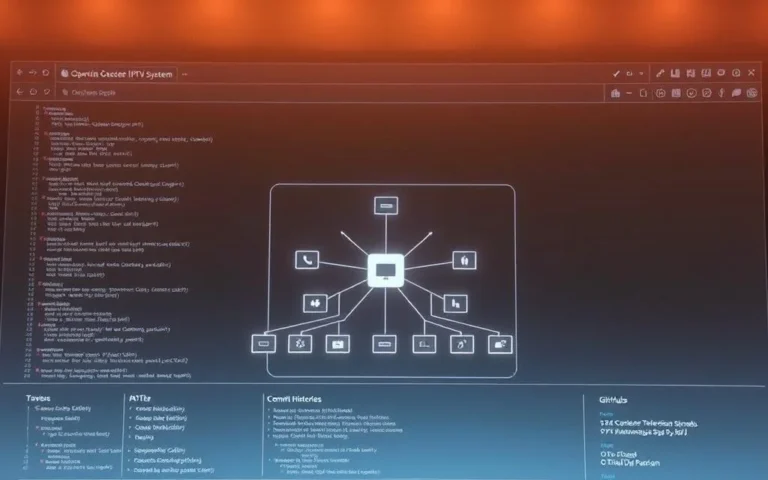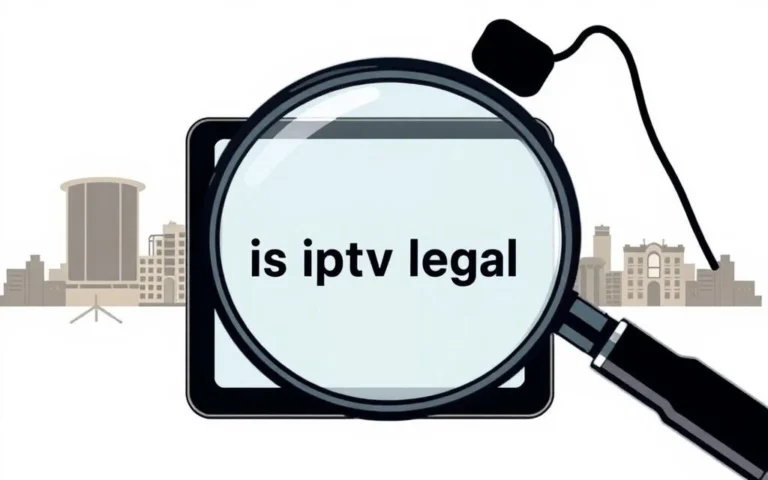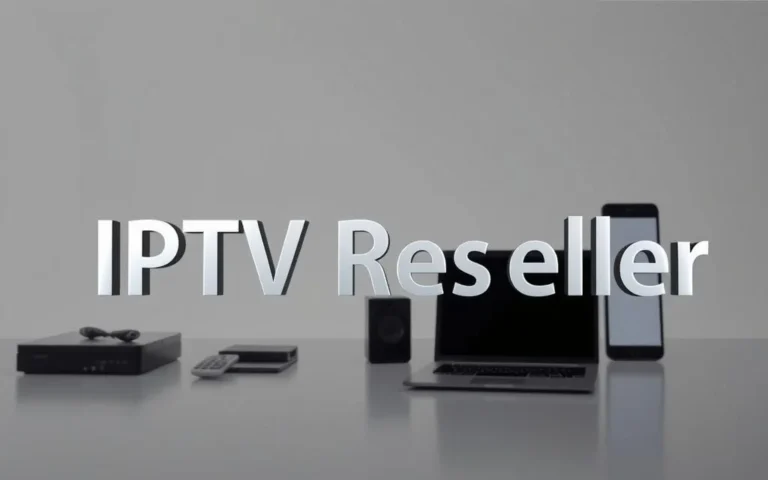which is best streaming device for tv for iptv?
What if your television could access a world of live channels and on-demand content, far beyond standard cable or satellite? This power lies in choosing the right hardware.
Table of Contents
IPTV, or Internet Protocol Television, delivers televised content over an internet connection. It requires a specific player, a specialized box, to connect your screen to the content host. This setup is similar to a traditional cable box but uses the internet.
Not all hardware is created equal for this task. A subpar choice can lead to constant buffering, poor video quality, and limited app availability. The correct selection transforms any standard TV into a powerful entertainment hub.
This guide explores the critical factors in picking a top-performing unit. It covers processing power, app compatibility, resolution support, and connectivity options. Readers will learn what separates excellent equipment from mediocre ones.
Key Takeaways
- IPTV delivers television content over the internet, requiring a specific box or device.
- The right hardware is crucial to avoid buffering and ensure high-quality streaming.
- Key features to evaluate include processing power, app support, and connectivity.
- This guide will compare various options, from budget-friendly to premium devices.
- An informed choice can unlock global content and a superior viewing experience.
Overview of IPTV and Streaming Technology
The delivery of television programming through internet connections has transformed home entertainment. This technology operates on different principles than traditional broadcast methods.

What is IPTV and How Does It Work?
Internet Protocol Television transmits televised content over broadband connections. Unlike conventional cable, it uses internet protocols to deliver media.
Subscribers connect to specialized servers through their internet service. These servers host channels and on-demand libraries. The technology decodes and displays the media on television screens.
Modern systems support live channels, video-on-demand, and interactive features. Dedicated hardware provides an optimized experience that standard browsers cannot match.
| Technology Era | Key Features | Resolution Support | Connectivity Options |
| Early Streaming (2010-2014) | Basic media playback | 720p HD | Ethernet, Wi-Fi N |
| Mid-Generation (2015-2018) | App ecosystems, voice search | 1080p Full HD | Dual-band Wi-Fi, Bluetooth |
| Current Generation (2019-Present) | 4K HDR, AI upscaling, smart integration | 4K UHD, HDR10+ | Wi-Fi 6, Ethernet Gigabit |
The Evolution of Streaming Devices
Streaming hardware has progressed from simple media players to sophisticated entertainment hubs. Early devices offered limited capabilities with basic video playback.
Today’s units feature powerful processors and expandable storage. They support ultra-high-definition video and immersive audio formats. Many integrate with smart home systems and voice assistants.
This evolution enables seamless access to diverse content libraries. Users enjoy superior picture quality and responsive interfaces across various streaming services.
Key Features to Consider in IPTV Streaming Devices
Before comparing brands, understanding the core technical specifications is essential. The right combination of features ensures smooth playback and access to desired content.
Evaluating these aspects helps users select a unit that matches their entertainment needs and technical setup.

Resolution, Audio, and Visual Quality
Video quality is a primary concern. Modern players support 4K Ultra HD resolution for incredibly sharp images.
Advanced formats like Dolby Vision enhance contrast and color. For sound, Dolby Atmos creates a truly immersive, three-dimensional audio experience.
These technologies require a powerful processor and a fast internet connection to function properly.
Connectivity Options and App Integration
Stable internet is non-negotiable. An Ethernet port offers the most reliable connection for high-bandwidth streams. Dual-band Wi-Fi provides a strong wireless alternative.
App availability is another critical factor. Access to major app stores means a wider selection of IPTV applications and media players.
Sufficient internal storage, like 16GB or more, allows for installing numerous apps and recording shows. A responsive interface makes navigation simple.
Voice control through assistants like Google Assistant adds convenience for hands-free search and control.
| Feature Category | Essential Specs | Premium Enhancements |
| Visual Quality | 4K UHD, HDR10 | Dolby Vision, HDR10+ |
| Audio Quality | Dolby Digital Plus | Dolby Atmos, DTS:X |
| Connectivity | Wi-Fi 5, USB 2.0 | Gigabit Ethernet, Wi-Fi 6, USB 3.0 |
| User Interface | Standard Remote | Voice Control, Custom Launchers |
Which Is Best Streaming Device for TV for IPTV
Evaluating the top contenders reveals clear distinctions between purpose-built units and multi-functional entertainment hubs. Consumers must weigh specialization against versatility when making their selection.
Comparative Analysis of Top Devices
Dedicated IPTV boxes like the Formuler Z8 offer excellent EPG integration and DVR capabilities. This specialized hardware provides a cable-like experience with optimized interfaces.
Versatile platforms such as the Nvidia Shield TV Pro deliver AI upscaling and gaming functions. These multi-purpose devices access broader app ecosystems beyond television content.
The MAG 324 represents a reliable budget-friendly option with solid 1080p performance. Meanwhile, premium choices like Apple TV 4K feature powerful A15 Bionic chips for seamless operation.
Amazon’s Fire TV Stick 4K Max balances affordability with Dolby Vision support. Each box presents unique advantages based on user priorities and technical requirements.
Storage capacity varies significantly across these options. Basic units offer 8GB, while premium models provide up to 32GB for extensive app libraries.
Connectivity differences also impact performance. Some boxes include external antennas for superior Wi-Fi reception. Others prioritize Ethernet connections for maximum stability.
This comparison helps identify the ideal streaming device for specific viewing habits and financial constraints. The right choice transforms any television into a powerful entertainment center.
Top Streaming Device Options for Different Budgets
Finding the perfect entertainment hardware often starts with a clear budget in mind. This guide organizes top-performing units into clear financial categories.
Every price point offers capable options. The right choice depends on desired features and performance needs.
“The value of a media player isn’t just in its sticker price, but in its ability to deliver a seamless, high-quality viewing experience over time.”
| Price Category | Example Devices | Key Features | Ideal For |
| Budget (Under $60) | Onn Android TV Box, Ematic 4K | 4K support, basic app stores | Casual viewers, secondary TVs |
| Mid-Range ($60 – $150) | Xiaomi Mi Box S, BuzzTV XR4000 | Enhanced processors, more storage | Families, frequent streamers |
| Premium ($150+) | Nvidia Shield TV Pro, Formuler Z8 | AI upscaling, expandable storage | Enthusiasts, power users |
Premium Device Selections
High-end boxes like the Nvidia Shield TV Pro justify their price with superior processing. They handle 4K HDR content effortlessly.
These devices often feature advanced upscaling and extensive connectivity. They are built for users who demand the best performance.
Budget-Friendly Alternatives
Affordable options such as the Onn Android TV Box provide excellent value. They support core IPTV functions without a high cost.
These boxes are perfect for users with a limited budget. They deliver reliable streaming for everyday use.
Detailed Review of Leading IPTV Boxes and Android Boxes
Leading hardware manufacturers offer specialized boxes designed specifically for IPTV streaming. These units provide optimized performance for television content delivery.
Highlights from Formuler, MAG, and Dreamlink Series
The Formuler Z8 stands out with its external antenna and 16GB storage. This box delivers excellent EPG integration for a cable-like experience.
MAG boxes like the 324 model offer reliable 1080p performance at affordable prices. They provide stable connections with internal antennas.
Dreamlink T2 represents an upgrade with Android 7 Nougat OS. It supports 4K/HDR capabilities for enhanced viewing.
Insights on Nvidia Shield TV Pro and Amazon Fire Devices
The Nvidia Shield Pro features AI upscaling technology. This premium box transforms HD content to near-4K quality.
Amazon Fire devices like the Fire Stick 4K Max offer exceptional value. They support Dolby Vision and Dolby Atmos at accessible price points.
The Fire TV Cube provides hands-free Alexa control. Its powerful processor handles 4K streaming effortlessly.
| Device Model | Key Features | Storage Capacity | Price Range |
| Formuler Z8 | External antenna, optimized EPG | 16GB | Mid-range |
| Nvidia Shield Pro | AI upscaling, gaming support | Expandable | Premium |
| Fire Stick 4K Max | Dolby Vision, Alexa integration | 16GB | Budget-friendly |
Chromecast with Google TV provides another excellent option. It integrates seamlessly with Prime Video and other streaming services.
Important Considerations: Setup, User Interface, and Connectivity
Getting a new entertainment box up and running should be a simple, frustration-free process. The initial setup and daily interface significantly impact the overall viewing experience.
Potential issues with connectivity can disrupt enjoyment. Understanding these practical aspects helps users make an informed choice.
Ease of Installation and User Experience
Most modern players follow a standard installation pattern. They connect to a television via an HDMI port and to the internet through Wi-Fi or an ethernet cable.
After signing into an account, users install their preferred application. Models like the Homatics Box R 4K are praised for their exceptionally quick setup.
The user interface is crucial for daily access. Dedicated boxes offer cable-like electronic program guides. Android TV provides intuitive, app-centric menus.
Voice control simplifies navigation. It allows for hands-free searching, enhancing the user experience.
Network Requirements and Wireless Stability
A stable internet connection is vital. Speeds of at least 25 Mbps are recommended for smooth 4K content access.
For the best stability, a wired ethernet connection is superior. It avoids Wi-Fi interference that can cause buffering issues.
Units with external antennas, like the Formuler Z8, provide stronger wireless signals. This allows for reliable streaming even when the router is on a different floor.
Considering these factors during selection prevents connectivity problems. It ensures a high-quality entertainment experience from day one.
Integration with Smart Technologies and Voice Assistants
Smart home connectivity elevates entertainment hardware from simple media players to central control centers. These advanced systems now incorporate artificial intelligence assistants that transform passive viewing into interactive experiences.
Utilizing Google Assistant, Alexa, and Voice Controls
Modern entertainment platforms feature deep integration with popular voice assistants. Android TV units and Chromecast with Google TV provide robust Google Assistant functionality. This allows users to search for content using natural language commands.
Amazon’s Fire TV lineup offers comprehensive Alexa integration. The Fire TV Cube stands out with true hands-free voice control, eliminating the need to press remote buttons. Users can launch any app or adjust volume through simple spoken commands.
Voice search dramatically reduces time spent typing on virtual keyboards. It enables faster content discovery and seamless multitasking during viewing sessions. Premium options like the Nvidia Shield TV Pro offer always-on voice recognition capabilities.
These systems extend beyond basic entertainment functions. They allow control of smart home devices like lighting and thermostats while watching content. Apple TV 4K integrates with HomeKit for users invested in the Apple ecosystem.
Smartphone-based control through Google Assistant or Alexa apps provides alternative command methods. This flexibility ensures continuous access even when remotes are misplaced. The integration transforms standard hardware into comprehensive entertainment hubs.
The Role of Device Performance in Enhancing IPTV Experience
The internal architecture of entertainment hardware determines whether users enjoy seamless playback or frustrating interruptions. Superior components work together to deliver crisp video and responsive navigation.
Processing Power and Storage Capabilities
Processor specifications directly impact loading speeds and menu responsiveness. High-end units feature octa-core chips that handle 4K content effortlessly.
Budget options with dual-core processors may struggle with high-resolution streams. This can lead to buffering during intense action scenes.
RAM capacity affects multitasking performance. Units with 4GB memory allow smooth app switching without slowdowns. Basic models with 1GB RAM suffice for simple viewing.
Storage space determines app library size and recording capabilities. Premium boxes offer 16GB to 32GB for extensive installations. Expandable options provide additional flexibility.
These technical factors combine to create the overall viewing experience. Proper power and memory ensure consistent picture quality across all streaming activities.
Conclusion
Selecting hardware that transforms television viewing into a personalized experience requires careful consideration of individual needs. The ideal choice depends entirely on specific requirements and budget constraints.
Excellent streaming experiences are achievable across all price points. Budget-conscious users find reliable solutions in affordable options, while power users benefit from premium devices with advanced features.
This comprehensive guide emphasizes matching technical capabilities to viewing habits. Key factors include resolution support, app compatibility, and connectivity options.
All hardware requires compatible applications and active service subscriptions to access content. The right selection unlocks unprecedented entertainment possibilities.
Armed with this guide‘s insights, readers can confidently choose equipment that delivers satisfying performance for years. The market continues evolving, offering ever-improving streaming devices for diverse needs.
FAQ
What is the difference between a standard streaming device and one optimized for IPTV?
Standard media players focus on popular services like Netflix. An IPTV-optimized box often has a dedicated app for live TV and better integration with service providers. These devices prioritize a smooth live channel viewing experience.
How important is Dolby Vision and Dolby Atmos support for IPTV?
These features are crucial for high-end home theater setups. Dolby Vision enhances picture quality with dynamic HDR, while Dolby Atmos provides immersive audio. For the best video and sound, a device like the Nvidia Shield Pro supports both formats.
Can I use an Amazon Fire Stick for IPTV services?
A> Yes, an Amazon Fire Stick can run IPTV apps. Users must sideload the application since many IPTV apps are not available in the official Amazon Appstore. The setup process is more involved compared to an Android TV box.
Why is ethernet connectivity recommended for streaming?
A wired ethernet connection offers greater stability and speed than Wi-Fi. This reduces buffering and ensures a reliable connection for high-resolution content, which is vital for a consistent IPTV experience.
What should I look for in a device’s user interface?
A clean, intuitive interface makes navigation simple. Look for easy access to your favorite apps and channels. Devices with a powerful processor provide a snappier, more responsive interface without lag.
Are budget Android boxes a good choice for IPTV?
While affordable, some budget Android boxes may have weaker processors and less storage. This can lead to performance issues and a poorer overall experience. Investing in a reputable brand often provides better long-term value.
How does voice control enhance the streaming experience?
Voice assistants like Google Assistant allow for hands-free control. You can search for content, change channels, or open apps using simple voice commands, adding a layer of convenience to your viewing.







